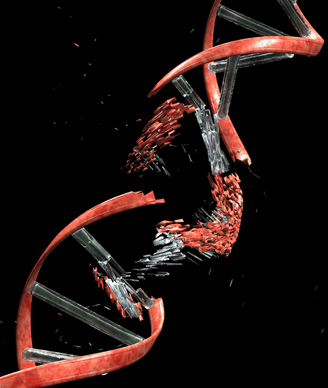Examining BRAF-Inhibitor Resistance Offers Few Clues in Melanoma Treatment
Due to the genetic heterogeneity observed in tumors of melanoma patients who developed resistance to BRAF inhibitors, assessing mechanisms of resistance has minimal potential to inform further treatment decisions.
Image © Constantin Ciprian / Shutterstock.com

Due to the genetic heterogeneity observed in tumor samples of BRAF-positive metastatic melanoma patients who developed resistance to BRAF inhibitors, assessing the genetic mechanisms of resistance may provide limited help in guiding further treatment decisions.
Results of the meta-analysis were presented (abstract 9008) at the 2015 American Society of Clinical Oncology (ASCO) Annual Meeting, held May 29 to June 2 in Chicago, by Douglas Buckner Johnson, MD, assistant professor of medicine at the Vanderbilt-Ingram Cancer Center in Nashville, Tennessee.
Johnson and colleagues assessed whether specific BRAF inhibitor resistance mechanisms were linked to clinical features, but were not able to make any correlations from those identified. The researchers found that NRAS mutations frequently occurred in patients treated with BRAF inhibitors (P = .045) and in patients with baseline brain metastases (P = .036), but progression-free survival and patterns of disease progression were similar despite the type of acquired resistance mechanism identified. Median survival after disease progression was 6.9 months.
“Our findings suggest that assessing particular resistance mechanisms at the time of progression has minimal potential to inform further prognostic or therapeutic decisions,” Johnson told Cancer Network.
Johnson and colleagues combined clinical and genetic data from 100 patients and a corresponding 132 melanoma tissue samples from three previously published studies that examined resistance to BRAF inhibitors. Putative acquired resistance mechanisms were identified in 77 of the 132 tumor samples (58%). The aberrations identified included KRAS or NRAS mutations (20%), BRAF splice variants (16%), amplification of BRAF V600E or BRAF V600K (13%), MEK1/2 mutations (7%), as well as alterations in pathways other than the MAP kinase (11%).
BRAF V600E and K amplifications as well as non-MAK kinase alterations often occurred along with other genetic aberrations. However, MEK1/2 mutations, BRAF splice variants, and NRAS mutations were predominantly identified as the sole acquired mutation of resistance (P = .02).
Among the 19 patients for whom two or more disease progression biopsies were available, the same acquired resistance mutation was isolated in only 1 patient.
“We observed a great deal of genetic heterogeneity among resistance samples,” noted Johnson, “which likely limited our ability to make further clinical correlations.” Additional studies to identify and characterize non-genetic acquired resistance mechanisms will be important in the future, he added.
Following treatment with a BRAF inhibitor, only 2 of 15 patients responded to the combination of BRAF plus MEK inhibition that is now approved by the US Food and Drug Administration as an upfront therapy for BRAF-positive metastatic melanoma. Of the 24 patients treated with ipilimumab following BRAF inhibition therapy, none responded to treatment with immunotherapy. “In the era of novel immune therapies, further assessment of the immune implications of progression will be important, and is something that many groups are actively pursuing,” said Johnson.